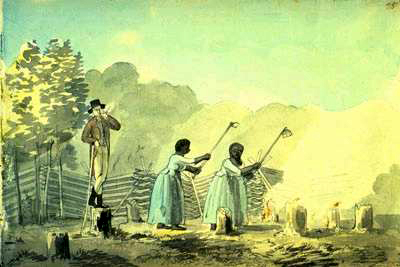Win an AABT
WHEN:
Tuesday, October 18th, 2011 – Monday, October 31st
WHERE:
Troy Technologies Facebook Page: http://www.facebook.com/TroyTechnologies
Troy Technologies Twitter Page: http://twitter.com/troywheelchairs
WHAT:
Troy Technologies and All-Access Battlefield Tours (AABT) are giving away two FREE tickets for a tour designed especially for wheelchair travelers who wish to fully explore and experience four major Civil War battlefields in Fredericksburg, Virginia.
AABT private tour service is designed to accommodate wheelchair travelers who wish to experience these historic scenes safely. AABT takes visitors, their families and friends directly to historical hotspots while moving at their own pace with the option to be transferred by Troy Technologies’ Pioneering Spirit Wheelchairs.
For more info on AABT please visit: http://www.pinstripepress.net/AABT.html
HOW TO WIN:
Want to enter? It’s easy! Just DM @TroyWheelchairs or post on their Facebook wall with a sentence or two explaining why you want two FREE tickets to the All-Access Battlefield Tours.
Good Luck!
Modern Master
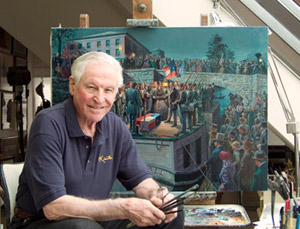 I have contacted a local cultural resources management firm and am in the process of acquiring information on the Eliza Eubanks House (see post below). In the meantime…my friend Mort Künstler has just released his latest print On to the Shenandoah! featuring Stonewall Jackson at Front Royal during his Shenandoah Valley Campaign. I just delivered the copy for his upcoming 2011 Snow Print this morning which is yet to be announced.
I have contacted a local cultural resources management firm and am in the process of acquiring information on the Eliza Eubanks House (see post below). In the meantime…my friend Mort Künstler has just released his latest print On to the Shenandoah! featuring Stonewall Jackson at Front Royal during his Shenandoah Valley Campaign. I just delivered the copy for his upcoming 2011 Snow Print this morning which is yet to be announced.
Mort has been a real blessing to me and I treasure the fact that I went from being one of his fans to his personal copywriter. I love researching the unique places where his paintings take place. Many times the historical focus is on the location, not the people. Every painting is a surprise and I never know what Mort will come up with next. His diversity and effort in recent years to depict scenes that take place off of the battlefield sets him apart from the rest of the Civil War painters out there. I’ve used Mort’s artwork on two of my book covers and in "The Angel of Marye’s Heights" documentary. I look forward to writing for him for many years. Here’s some links to pieces that I’ve written for or about the man.
Paintings:
On to the Shenandoah! Gen. Jackson at Front Royal, May 23, 1862
General Orders 100 Lincoln and the Lieber Code, April 1863
The Strangest Race JEB Stuart, White House, VA, June 29, 1862
Heavy Traffic on the Valley Pike Strasburg, VA, Summer 1861
Mrs. Jackson Comes to Winchester Jacksons at the Taylor Hotel, Dec. 23, 1862
The Gray Ghost Mosby in Warrenton, January 18, 1863
The Angel of the Battlefield Clara Barton & Walt Whitman at Chatham, Dec. 15, 1862
Unconquered Spirit A.P. Hill, Lee, and Longstreet, Orange, August 1863
Last Tribute of Respect Jackson's Funeral, VMI, May 15, 1863
Duty, Honor and Tears Long Branch, Millwood, VA, May 24, 1862
The Autograph Seekers of Bel Air Gen. Lee, Front Royal, Va., July 22, 1863
Articles:
The Rest of the Story The Free Lance-Star, March 13, 2010
Human Decency During War The Free Lance-Star, November 8, 2008
Mort Künstler Unveils Local Print The Free Lance-Star, November 3, 2007
Popular Civil War artist no stranger to Fredericksburg FLS, June 6, 2007
Next Post
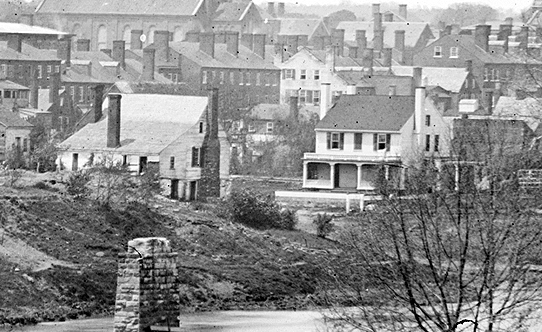
A look at the historic Eliza Eubank house on Sophia Street yesterday and today.
(Image courtesy of the National Park Service)
Just a reminder…
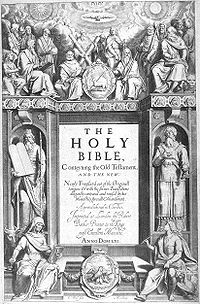 Tomorrow I will be participating as a reader at the King James Bible Anniversary Celebration at Spotsylvania Presbyterian Church. I will be reading Chapters 15, 17, 19, 21, 23, 25 and 27 from the Book of Acts. This year is the 400th Anniversary of the publication of the King James Version of the Bible (KJV). Several churches in our community, including SPC, are working together to provide a series of events to honor this occasion. The program opened with a lecture on September 26 at Fredericksburg Baptist Church which featured noted experts on the KJV. This was followed by an ongoing multi-church effort to publicly read the entire King James Bible from September 16 through October 2. My church is hosting a reading of the New Testament books of Acts through 2 Corinthians on Saturday, October 1 beginning at 3pm. As a historian I tend to favor the KJV, despite its antiquated use of language. Join us if you’re interested in hearing the Word in this traditional format.
Tomorrow I will be participating as a reader at the King James Bible Anniversary Celebration at Spotsylvania Presbyterian Church. I will be reading Chapters 15, 17, 19, 21, 23, 25 and 27 from the Book of Acts. This year is the 400th Anniversary of the publication of the King James Version of the Bible (KJV). Several churches in our community, including SPC, are working together to provide a series of events to honor this occasion. The program opened with a lecture on September 26 at Fredericksburg Baptist Church which featured noted experts on the KJV. This was followed by an ongoing multi-church effort to publicly read the entire King James Bible from September 16 through October 2. My church is hosting a reading of the New Testament books of Acts through 2 Corinthians on Saturday, October 1 beginning at 3pm. As a historian I tend to favor the KJV, despite its antiquated use of language. Join us if you’re interested in hearing the Word in this traditional format.
Posted by ny5/pinstripepress
at 10:28 AM EDT
Updated: Friday, 30 September 2011 10:32 AM EDT
Permalink |
Share This Post
Bernard Slave Cabins
One of the more overlooked spots on the Fredericksburg National Battlefield is the Bernard Slave Cabins. This area was the homestead of a number of enslaved African-Americans and a focal point of the fighting that took place near Prospect Hill and the Slaughter Pen Farm. Today the site is accessible via the Bernard Cabins Trail. According to the NMPS website:
Halfway down Lee Drive, a little more than a half mile beyond its intersection with Lansdowne Road, begins one of the newest and least-known trails on the Fredericksburg Battlefield. The trail starts at the road and winds through the woods for half a mile before emerging into a large plowed field overlooking Shannon Airport and the Richmond, Fredericksburg, and Potomac Railroad (now CSX). It terminates at Bernard's Cabins, the site of a small slave community. Bernard's Cabins became an important Confederate artillery position on "Stonewall" Jackson's end of the line. The center of his line was wooded, preventing the Confederate leader from placing any artillery there. Instead, he placed a large number of cannons on either side of the woods and angled the guns toward one another so as to catch any Union troops who might attempt to attack the woods in a deadly crossfire. To the left of the woods, at Bernard's Cabins, stood nine guns of Capt. Greenlee Davidson's battalion. The cabins and their occupants belonged to Arthur Bernard, the owner of Mannsfield, a plantation house that stood about one and a half miles to the east.
The NPS tabletop marker that was erected on the site states: “On this knoll stood Bernard's Cabins, a small community that in 1860 was home to about three dozen slaves. The complex consisted of three two-room cabins, a stone-lined well, and perhaps two additional buildings. This was only one of several such clusters of slave housing scattered across the 1,800-acre ‘Mannsfield’ estate. The men and women who lived here helped power the most prosperous plantation in the Fredericksburg area. Arthur Bernard's plantation house, ‘Mannsfield’ (1766), stood about a mile east of here (it burned in 1863). During the 1862 Battle of Fredericksburg it served as headquarters for three top Union generals - W.B. Franklin, J.F. Reynolds, and W.F. Smith.”
The Historical Marker Database provides detailed GPS data on this spot, as well as photographs depicting the current site and markers. The Bernard Slave Cabin marker includes a 1798 Benjamin Latrobe illustration (above) depicting two slave women preparing tobacco under the watchful eye of an overseer, as well as a 1770 advertisement seeking the return of a runaway slave from the Mannsfield plantation.
NMPS historian Frank O 'Reilly describes the significance of the Bernard Slave Cabins grounds in his book “The Fredericksburg Campaign: Winter War on the Rappahannock.” These small cottage-like buildings presented a potential problem for Confederate Gen. Thomas “Stonewall” Jackson’s artillerists who were forward deployed and attempting to prepare a cross-fire in anticipation of the Federal’s advancement towards Prospect Hill. He writes:
Crutchfield offset the problem somewhat by Captain Greenlee Davidson’s small battalion of guns at the Bernard Slave Cabins to cover Brockenbrough’s left rear. Crutchfield believed that an attack against Brockenbrough’s battalion would expose its flank to a raking oblique fire from Davidson’s guns. Davidson used elements of three batteries with a combination of six 3-inch rifles, two Napoleons, and one light 6-pounder. The artillerist posted Captain William H. Caskie’s Hampden (Virginia) Artillery with another section of Ed Marye’s Fredericksburg Artillery and Lieutenant Charles W. Statham’s Lee (Virginia) Artillery. The batteries unlimbered behind a rise capped by Bernard’s Cabins, three hundred yards behind Brockenbrough, and a thousand yards to R. Lindsay Walker’s left. Some of Marye’s Fredericksburg Artillery fought within sight of their homes. The gunners tore down the Bernard Cabins to clear their field of fire.
This tactic would prove disastrous for those positioned at Bernard’s Cabins and tasked with covering the RF&P railroad. In an article written for The Free Lance-Star’s Town and County titled “Slave cabins were center of 1862 battle maneuverings” fellow NMPS historian Donald Pfanz recalled the futility of the positioning and the resulting devastation that ensued. He wrote:
On the morning of Dec. 13, 1862, Union skirmishers crept forward through the mist-shrouded fields and began shooting at Brockenbrough’s exposed gunners. When Lane’s men were unable to drive them away, Brockenbrough opened on the pesky Union riflemen with canister large cylinders filled with dozens of marble-sized iron balls that had the effect of a giant shotgun blast. Brockenbrough’s guns drew the fire of Union artillery batteries on the plain ahead, and soon the Confederate guns were under intense fire from enemy sharpshooters and cannon alike.
The slave cabins and a small pine grove had stood between Davidson and his Yankee assailants, but no more. By the time he stopped shooting, the cabins were in ruins and the grove had been reduced to kindling. At Bernard’s Cabins, Union shot ignited one of Davidson’s ammunition chests, causing a terrific explosion. Fifteen of 20 shells caught fire and exploded, blackening the ground and stampeding the battery horses. One shell cut a Confederate gunner in two and threw his blackened clothing into a nearby tree; another took off the leg of an officer just above the knee. At one gun alone, five artillerists were injured. Jackson witnessed the vigor of the Union response and wisely cancelled the attack. South of town, at least, the killing was over.
Today, the Bernard Cabins Trail provides one of the most peaceful and enjoyable nature walks on the whole Fredericksburg Battlefield proper. Unfortunately, the cabins themselves are no longer standing and one has to depend entirely on their imagination to envision what this small slave community looked like. Perhaps in the future, either through traditional building reconstruction or virtual 3D-modeling technology, the Bernard Slave Cabins will be resurrected again. Until then, I highly recommend that visitor’s take a moment during their tour to leave the “main drag” of Lee Drive and hike the half a mile down to this unique and important site.
Posted by ny5/pinstripepress
at 11:23 AM EDT
Updated: Wednesday, 28 September 2011 11:52 AM EDT
Permalink |
Share This Post
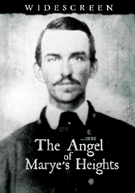
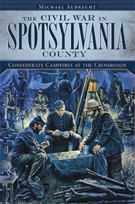
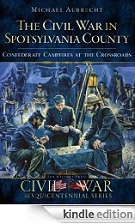

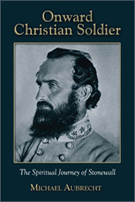

 I have contacted a local cultural resources management firm and am in the process of acquiring information on the Eliza Eubanks House (see post below). In the meantime…my friend Mort Künstler has just released his latest print
I have contacted a local cultural resources management firm and am in the process of acquiring information on the Eliza Eubanks House (see post below). In the meantime…my friend Mort Künstler has just released his latest print 
 Tomorrow I will be participating as a reader at the King James Bible Anniversary Celebration at
Tomorrow I will be participating as a reader at the King James Bible Anniversary Celebration at 